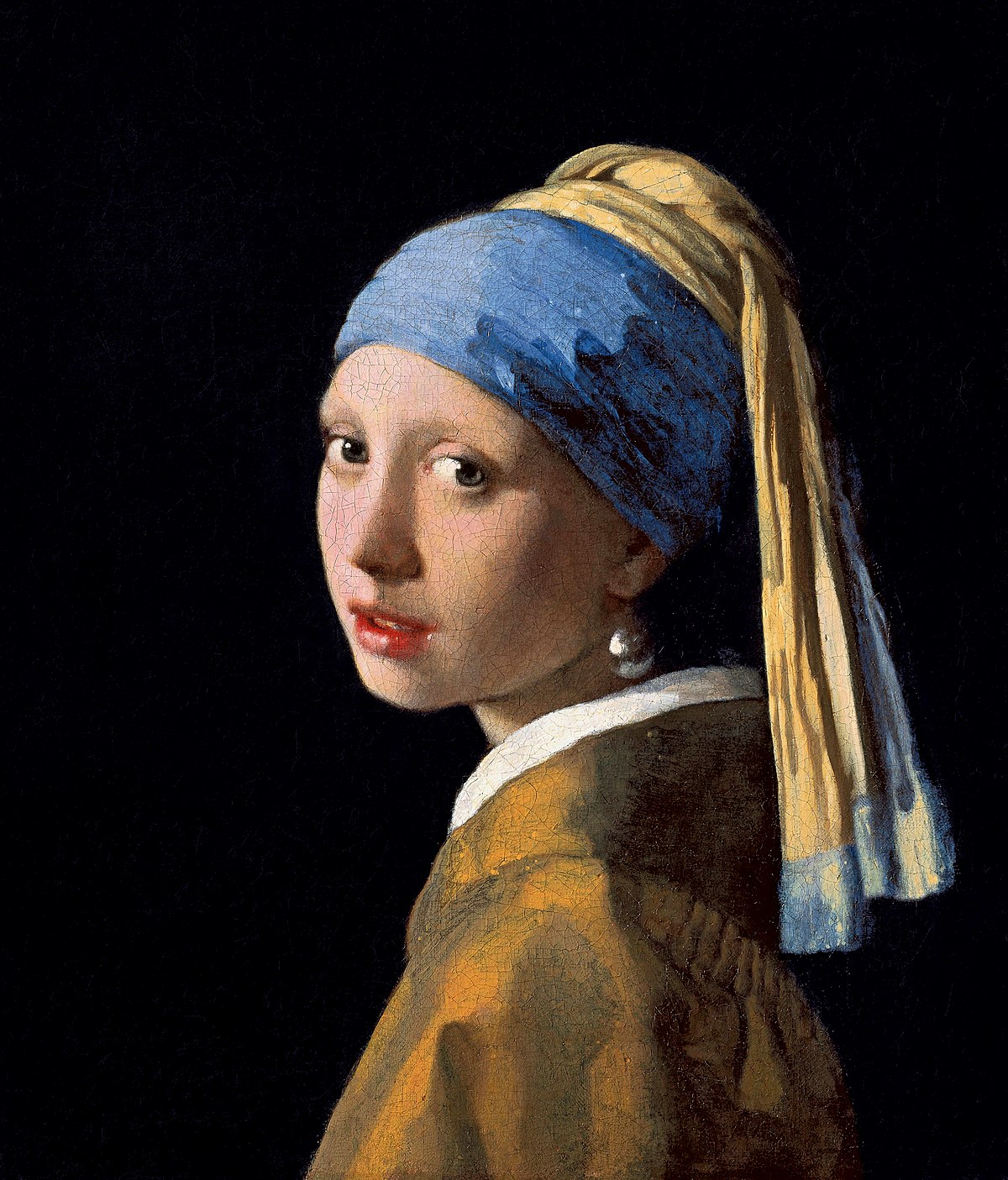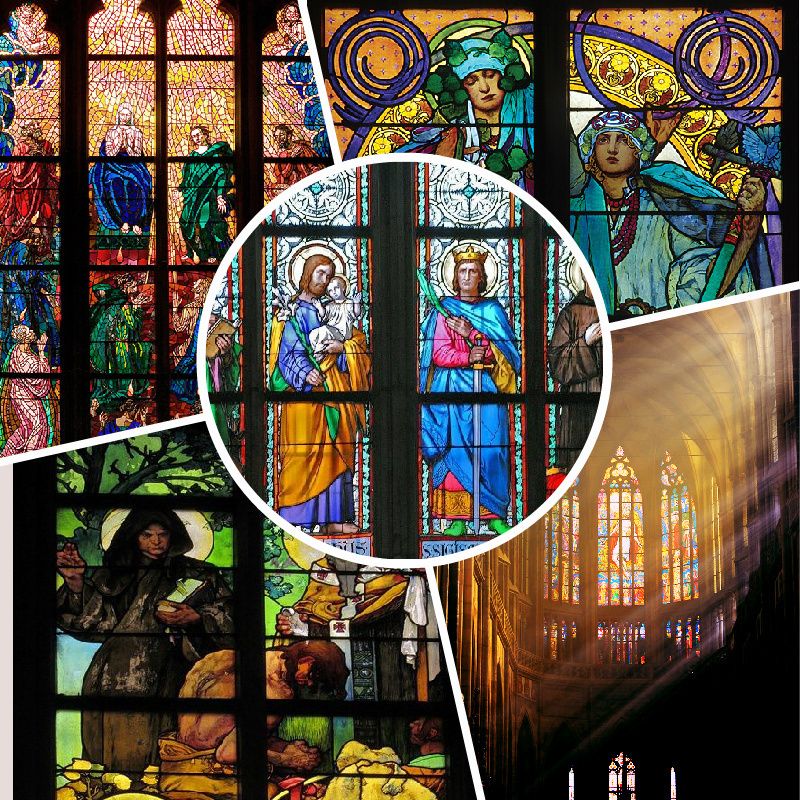Gothic: the whole mystic of the Middle Ages
 Gothic originated in the middle of the XII century in northern France, in the XIII century, spread to the territory of modern Germany, Austria, the Czech Republic, Spain, England, and at the end of the XIV century, came to Italy. In Eastern Europe, style came later and lasted the longest – until the XVI century.
Gothic originated in the middle of the XII century in northern France, in the XIII century, spread to the territory of modern Germany, Austria, the Czech Republic, Spain, England, and at the end of the XIV century, came to Italy. In Eastern Europe, style came later and lasted the longest – until the XVI century.
This happened because Gothic replaced the Romanesque style, which originated and spread from Italy – the country unconsciously resisted new trends from the outside.
Of course, the Gothic style is most noticeable in architecture. However, in the painting of his frightening greatness also manifested.
Petrus Christus. Our Lady of the Dry Tree
Petrus Christus is a representative of the Early Netherlands painting, which combines the features of the late Gothic and early Renaissance. He worked in a very interesting period of development of the art of the Netherlands, which deserves close study.
What are the main features of the Gothic?
Seriousness and pomp in everything. Majesty, spirituality. Typical characters and themes: religious motives, Last Judgment, sins, knights, graceful ladies, statesmen on the threshold of making important decisions, and so on. Characters tend to retain serious, formal, harsh poses and faces. For example, the newlyweds in the gothic picture will not be happy and carefree – they will be serious and even harsh, as if they had just learned an important secret of world importance.
The colors in the Gothic are Baroque, with a predominance of burgundy, gold – noble shades, but not light, but rich, thick.
In the pictures there is a certain angularity, sharpness of forms.
There is a separate subtype of style – international gothic, or soft style. It developed in Bugundy, Bohemia and Silver Italy in 1380-1430. To such works, all the Western European rulers of the time. Hence the third name of the direction – the court gothic.
Feature: colorful, decorative, sophistication. There is less anxiety and seriousness than in ordinary Gothic, more color. Pictures do not call to think about the eternal and important – they rather decorate the space, betraying the interior with grandeur and severity.
There is a lot of gold in a soft style, but there is little light and shadow.
The characters’ outfits are lush, as are the interiors around. Simple language can be called this “gothic in the rich.”
For a simple viewer, such pictures look like something between a usual picture and a medieval icon. This is an interesting point: such a union of religious and secular worlds spurred the process of development of art in Europe. At that time, the number of paintings, decorative items, which were ordered not by church ministers and rulers, but by ordinary people of good means, significantly increased. Relatively speaking, it was thanks to the international Gothic art went to the masses in small steps.
Time is up
Stained glass – one of the main directions of Gothic painting. Artists preferred to paint not on the canvas, but on the glass. The result is visible in the windows of the gothic churches.
In the period of Gothic stained glass gradually replaced the murals. In the Renaissance, they returned.
Initially, the plots were religious, but over time, stained glass windows appeared on a domestic theme, with scenes from the lives of artisans and peasants. These works – the history of the Middle Ages in pictures. Thanks to him, we in the modern world have an idea of what was happening in the past – this is about the importance of the penetration of art into everyday life.
Gothic stained glass helped medieval masters to reach a new level of development. Also, the development of stained glass work indirectly influenced the appearance of Murano glass in the era of the Ferrara school of painting.
You are an expert if:
You understand that soft style, or international Gothic – a transitional period to the Renaissance. This is a bridge between medieval art and the Renaissance.
You are a layman, if:
You call modern buildings and paintings Gothic simply because they look gothic. Experts call Gothic only works that were created in the XII-XVI century. All later works in a similar style are neo-gothic.
Famous masters of the genre:
Limburg brothers, Christus Petrus, Master Franke, Antonio Pisanello (part of the work)
– Scratch of the English King Edward I Plantagenet (unknown author, presumably XIII century)
In stained glass art: the stained glass window in the Cathedral of Chartres “The Virgin and Child”, the stained glass windows of the Reims Cathedral.
In architecture: the Cologne Cathedral, the Palace of Roads in Venice, the Cathedral of Santa Maria del Mar in Barcelona; in Ukraine – Latin Cathedral in Lviv.
That’s the story!
In the Renaissance, Gothic was perceived as a symbol of everything dark and backward, gloomy and decadent, unnatural, divorced from real life.
However, in the late 18th and early 19th centuries, the classicists began to struggle with the too windy ideas of romanticism.




